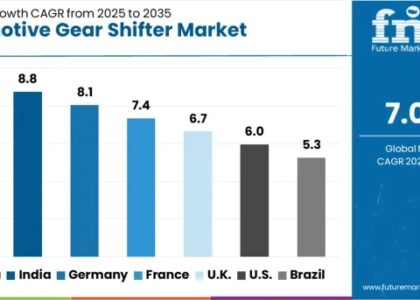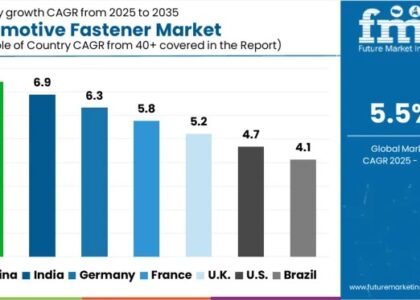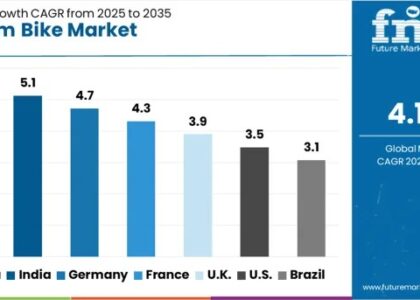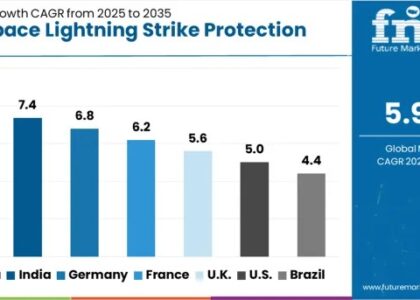In recent years, flexible food packaging has seen a significant rise in innovation due to technological advancement. One such type of flexible packaging is flexible packaging paper which has witnessed an upsurge in demand. Flexible packaging paper is mainly used for packaging of several food items such as confectioneries, snacks, coffee, sugar, etc. In addition, growing concern related to the disposal of plastic waste has created growth opportunities for flexible packaging paper market. Furthermore, flexible packaging paper other than food items can be used for several end uses, for example, personal care & cosmetics, pharmaceutical, consumer goods, etc.
The market for flexible packaging paper is anticipated to expand at a CAGR of 4% from 2022 to 2032.
“Paper film packaging has emerged as an environmentally beneficial substitute for plastic packaging and is here to stay” for goods produced by manufacturing businesses as well as home items.
Flexible packaging paper is primarily used to package a variety of foods, including sweets, snacks, coffee, sugar, and others. The market for flexible packaging paper has also benefited from increased concerns over the disposal of plastic trash.
Get a Sample of the report @ https://www.futuremarketinsights.com/reports/sample/rep-gb-7946
Examples of some of the key players operating in the global flexible packaging paper market are Sappi Limited, Smurfit Kappa Group plc, Mondi Group Plc, International Paper Company, DS Smith Packaging Limited, WestRock Company, Nippon Paper Industries Co., Ltd., Oji Holdings Corporation, Stora Enso Oyj, Georgia-Pacific LLC, Billerud Korsnäs AB, Packaging Corporation of America, Pratt Industries, Inc., Kap Stone Paper and Packaging Corp, etc.
The flexible packaging paper market is expected to grow considerably due to the increasing adoption of eco-friendly packaging products by consumers. Flexible packaging paper is widely preferred due to its properties such as lightweight, cost-effectiveness, and durability. Flexible packaging paper products require smaller space on shelves as compared to rigid packaging products. In addition, flexible packaging paper also provides a wide range of presentation possibilities that help product manufacturers increase the aesthetic appeal of the product and also enhance product branding. On the other hand, plastic flexible packaging has better tensile strength as compared to flexible packaging paper, which is a factor expected to hamper the growth of the market.
Following government measures, particularly social distancing norms and stay-at-home orders, companies operating in the Flexible Packaging Paper market have put their production on a halt. Additionally, movement restrictions and supply chain disruptions have created a logistical nightmare for market players, leading to severe product shortages in the global marketplace. Several market players are further planning to relocate their supply chain from China – the first epicenter of COVID-19.
Ask an Analyst @ https://www.futuremarketinsights.com/ask-the-analyst/rep-gb-7946
The FMI’s report includes an interesting chapter on preliminary impact of the COVID-19 on the Flexible Packaging Paper market. This allows both leading and emerging market players to understand the market scenario during a crisis and aids them in making sound decisions to gain a distinct competitive edge.
The global flexible packaging paper market is segmented by material type, packaging type, distribution channel, and end-use industry. The pricing for flexible packaging paper has being done based on material type segment in US$ million, and the volume is considered in tonnes.
On the basis of material type, the global flexible packaging paper market is segmented into –
Coated Unbleached Kraft Paperboard (CUK)
Solid Bleached Sulfate (SBS)
Coated Recycled Paper (CRP)
Waxed Paper
On the basis of packaging type, the global flexible packaging paper market is segmented into –
Wraps
Cartons
Bags & Sacks
Envelops
Lids
Pouch
Sachet
Others
On the basis of distribution channel, the global flexible packaging papermarket is segmented into –
Retail
E-commerce
On the basis of end-use industry, the global flexible packaging paper market is segmented into –
Food & Beverages
Personal Care & Cosmetics
Pharmaceutical Agriculture
Electrical & Electronics Consumer Goods
Request For Customization@ https://www.futuremarketinsights.com/customization-available/rep-gb-7946
Important Questions Answered in the Flexible Packaging Paper Market Report
Which end-user remains the top revenue contributor in different regional markets?
At what rate has the global Flexible Packaging Paper market been expanding during the forecast period?
How will the global Flexible Packaging Paper market look by the end of the forecast period?
What innovative strategies are adopted by Flexible Packaging Paper market players to stay ahead of the pack?
About FMI
Future Market Insights (ESOMAR-certified market research organization and a member of the Greater New York Chamber of Commerce) provides in-depth insights into governing factors elevating the demand in the market. It discloses opportunities that will favor the market growth in various segments on the basis of Source, Application, Sales Channel, and End Use over the next 10 years.
Contact:
Future Market Insights Inc.
Christiana Corporate, 200 Continental Drive,
Suite 401, Newark, Delaware – 19713, USA
T: +1-845-579-5705
Report: https://www.futuremarketinsights.com/reports/flexible-packaging-paper-market
For Sales Enquiries: sales@futuremarketinsights.com
Browse latest Market Reports: https://www.futuremarketinsights.com/reports
LinkedIn| Twitter| Blogs






